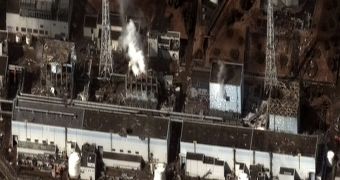The Atmospheric Chemistry and Physics journal published an online study which highlights the fact that the Japanese government might have underestimated the consequences of the Fukushima Daiichi nuclear disaster.
The study is based on the analysis of radioactivity data gathered from all parts of the planet. It appears to be one of the most efficient instruments in determining the scale of the nuclear threat by evaluating the amount of radiations generated by the power plant.
In their opinion, pools which minimized the catastrophe's potential led to the environment's contamination with caesium-137, a phenomenon which could have been prevented from taking place.
Also, after analyzing information from all across the globe, the scientists who joined efforts to elaborate this research paper think they are now able to declare that the Japanese administration minimized the amount and potential effects of the Fukushima radiations.
It is very difficult to say what really happened during the incident. Despite this fact, researchers state that this new pool provides one of the most conclusive answers to several questions regarding the exact amount of emissions officials from the power plant actually have to take credit for.
Japan has last talked about the incident in June, when the plant's officials took credit for the 1.5 × 1016 bequerels of caesium-137 that supposedly acted as polluters.
This substance represents one of the most significant threats for the environment, since it is considered the plant's main source of contamination. Studies provided by the government reflected that the Fukushima incident is also responsible for launching an even more considerable quantity of of xenon(133, 1.1 × 1019 Bq).
The Japanese government couldn't establish with maximum precision the impact this incident had upon the environment, because the monitoring posts were too affected by radiation to provide accurate information.
In order be specific while talking about the amount of emissions which is threatening life in that particular area, scientists would have to be able to reconstruct the processes that actually took place in the reactors.
So far, these actions are still a mystery, not only for the Fukushima incident, but for most of such devastating events.
"If you look at the estimates for Chernobyl, you still have a large uncertainty 25 years later," declared Andreas Stohl, a scientist from the Norwegian Institute for Air Research in Kjeller.

 14 DAY TRIAL //
14 DAY TRIAL //